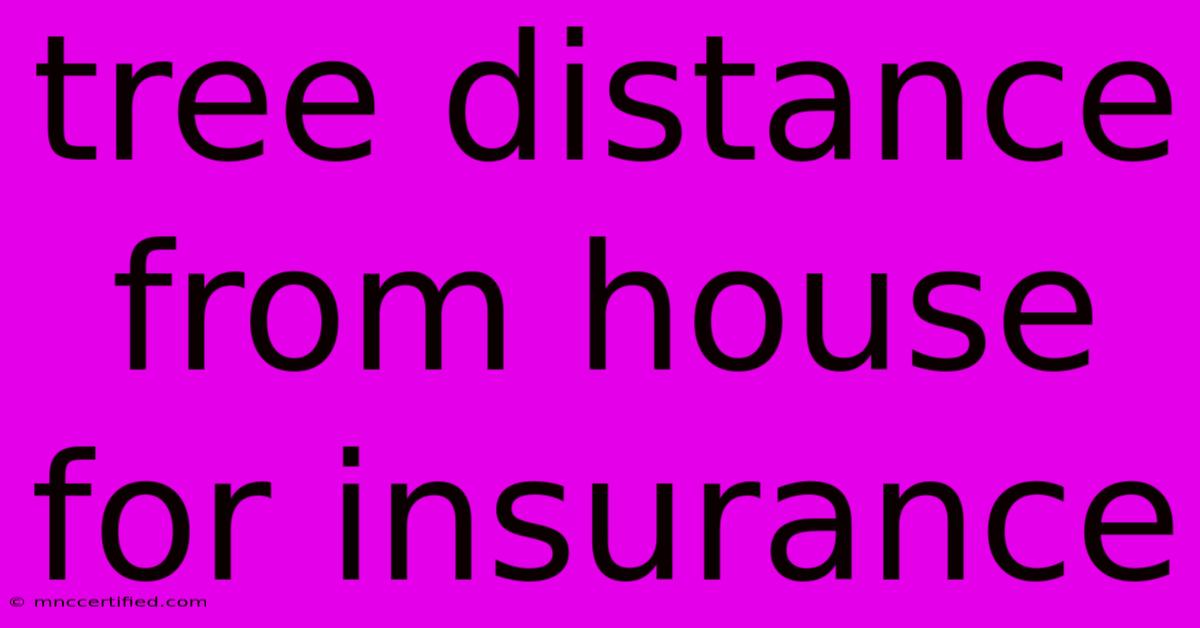Tree Distance From House For Insurance

Table of Contents
How Close Can Trees Be to Your House? Insurance Considerations
Owning a home comes with a lot of responsibilities, and one of those is ensuring your property is safe. This includes considering the impact of trees, especially when it comes to insurance.
While trees add beauty and value to your property, they can also pose risks. Falling trees can cause significant damage to your house, potentially leading to expensive repairs and insurance claims. This is where tree distance from your house becomes a crucial factor for insurance companies.
Why Distance Matters: Insurance Perspectives
Insurance companies are acutely aware of the dangers posed by trees, particularly those located close to homes. Here's why distance matters:
- Increased risk of damage: Trees close to your house are more likely to fall on your roof or structure during storms, winds, or even simply due to decay.
- Higher insurance premiums: If your home is considered high-risk due to nearby trees, you might face higher premiums or even difficulty getting coverage.
- Potential claim denial: In some cases, insurers might deny claims if they deem the tree's proximity to your house a contributing factor to the damage.
Determining Safe Distances: A Guide
While specific requirements vary depending on your location, insurance company, and tree species, here are some general guidelines:
General Recommendation: Aim for at least 15-20 feet of clearance between the trunk of a mature tree and your house.
Factors Affecting Distance:
- Tree size and species: Larger trees, especially those with weak root systems or known for being susceptible to storm damage (e.g., cottonwood, willow) require greater clearance.
- Tree health: Diseased or decaying trees pose a higher risk and need more distance.
- Local building codes: Your city or municipality may have specific ordinances regarding tree placement near structures.
What to do:
- Consult an arborist: A certified arborist can assess your trees' health, determine their risk factors, and recommend appropriate distances for your property.
- Check your insurance policy: Review your policy to understand your insurer's requirements regarding tree proximity.
- Consider tree removal: If a tree poses a significant risk, it might be best to remove it or have it pruned professionally.
Building a Safer and More Secure Home
Maintaining a safe distance between your house and trees is crucial for minimizing risk and safeguarding your investment. It also helps ensure that your insurance claim is processed smoothly in case of damage.
Beyond distance, regular tree maintenance is essential. This includes:
- Pruning: Remove dead or diseased branches and reduce the overall size of the tree to minimize potential damage.
- Inspection: Regularly check for signs of disease, insect infestation, or root problems.
- Storm preparedness: Prepare for severe weather events by taking necessary precautions such as securing loose objects and trimming trees.
By prioritizing safety through proper tree management and communication with your insurer, you can protect your home and your peace of mind.

Thank you for visiting our website wich cover about Tree Distance From House For Insurance. We hope the information provided has been useful to you. Feel free to contact us if you have any questions or need further assistance. See you next time and dont miss to bookmark.
Featured Posts
-
Pakistan Dominate Australia With Nine Wicket Win
Nov 09, 2024
-
San Francisco Mayor Race Lurie Claims Victory
Nov 09, 2024
-
Commercial Auto Insurance Rhode Island
Nov 09, 2024
-
Does Insurance Pay For Deviated Septum
Nov 09, 2024
-
Nosferatu Screening Captures Student Attention
Nov 09, 2024